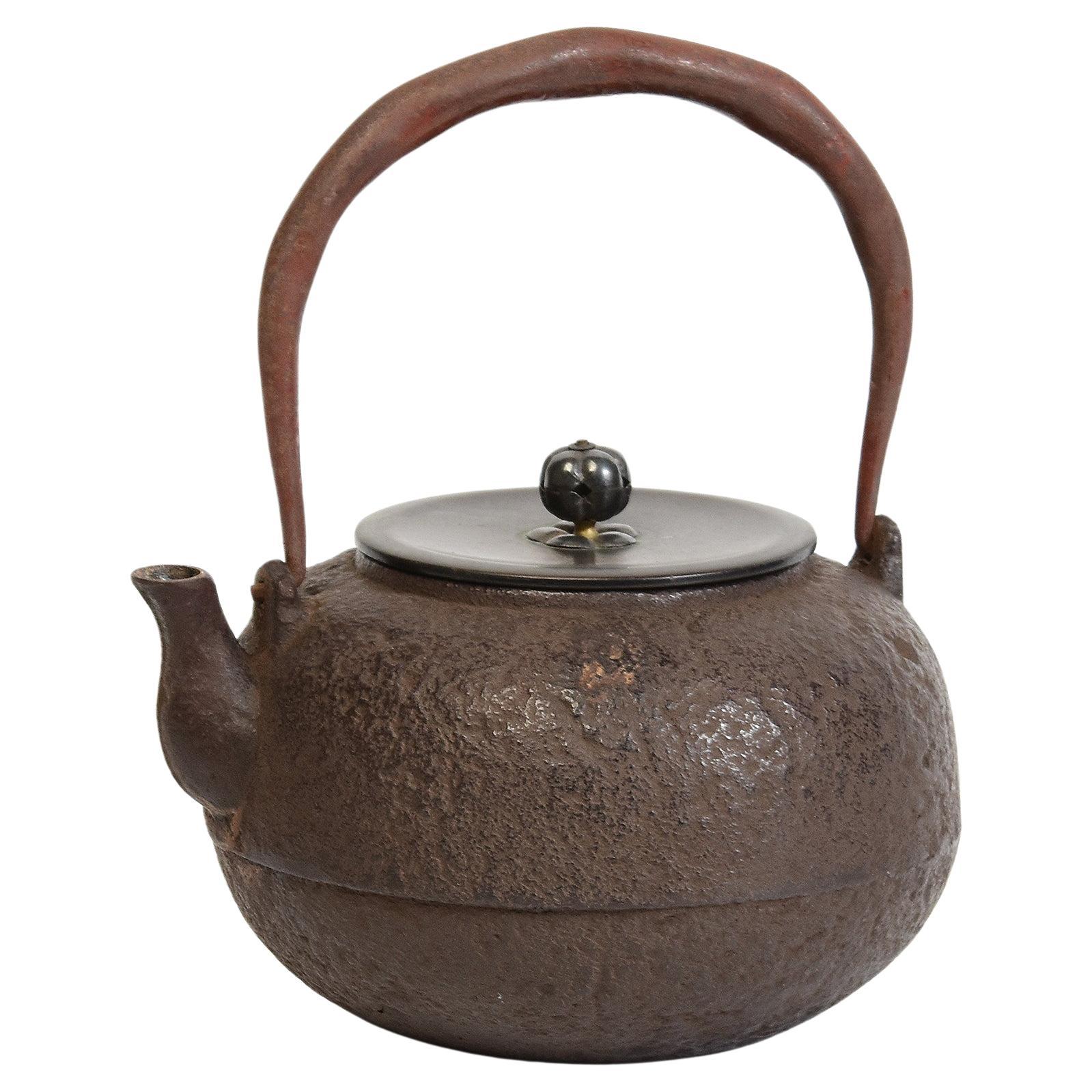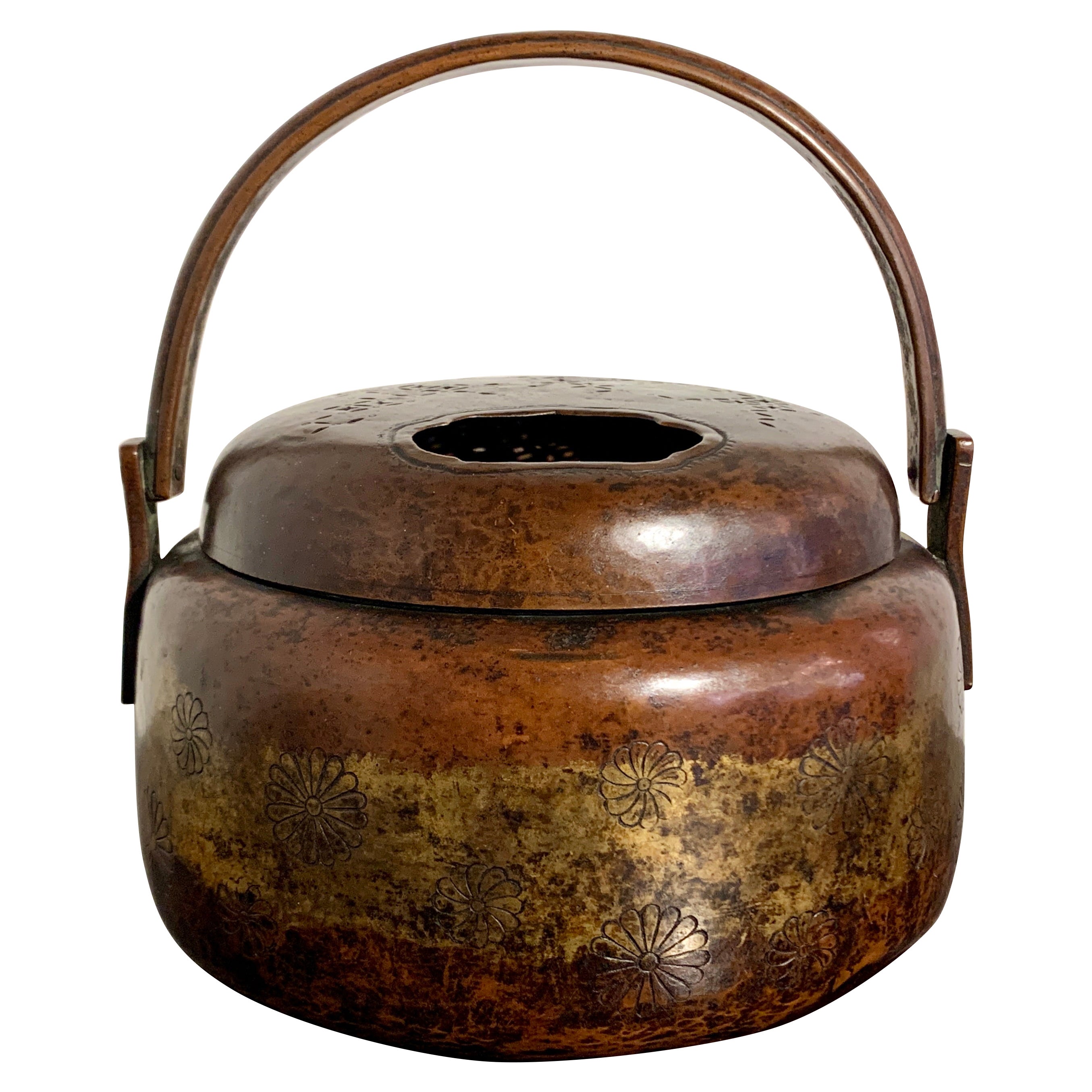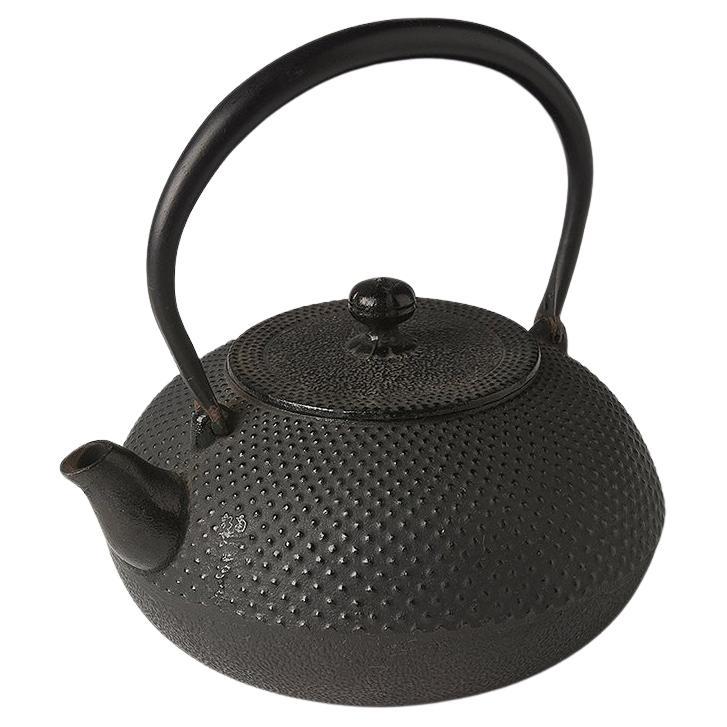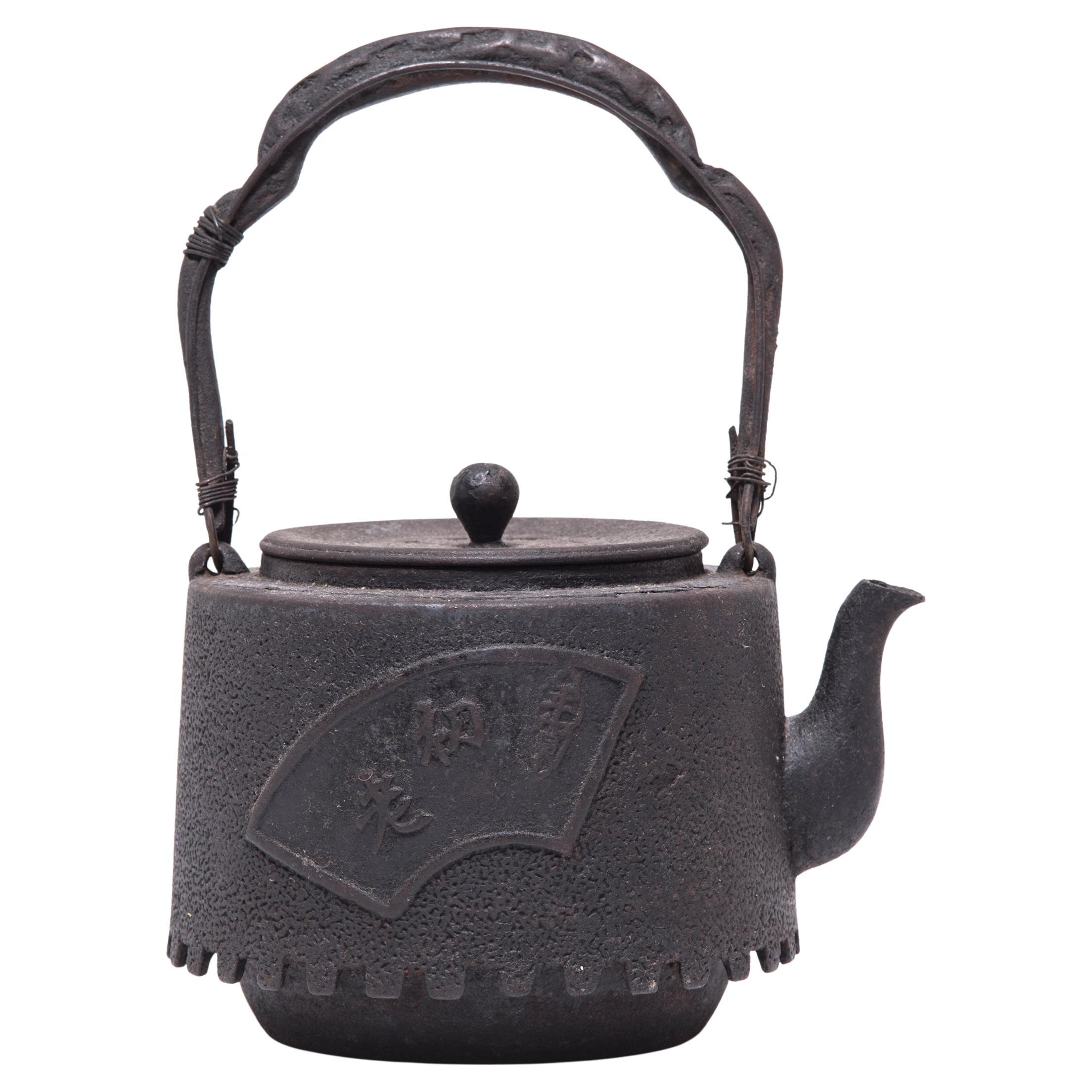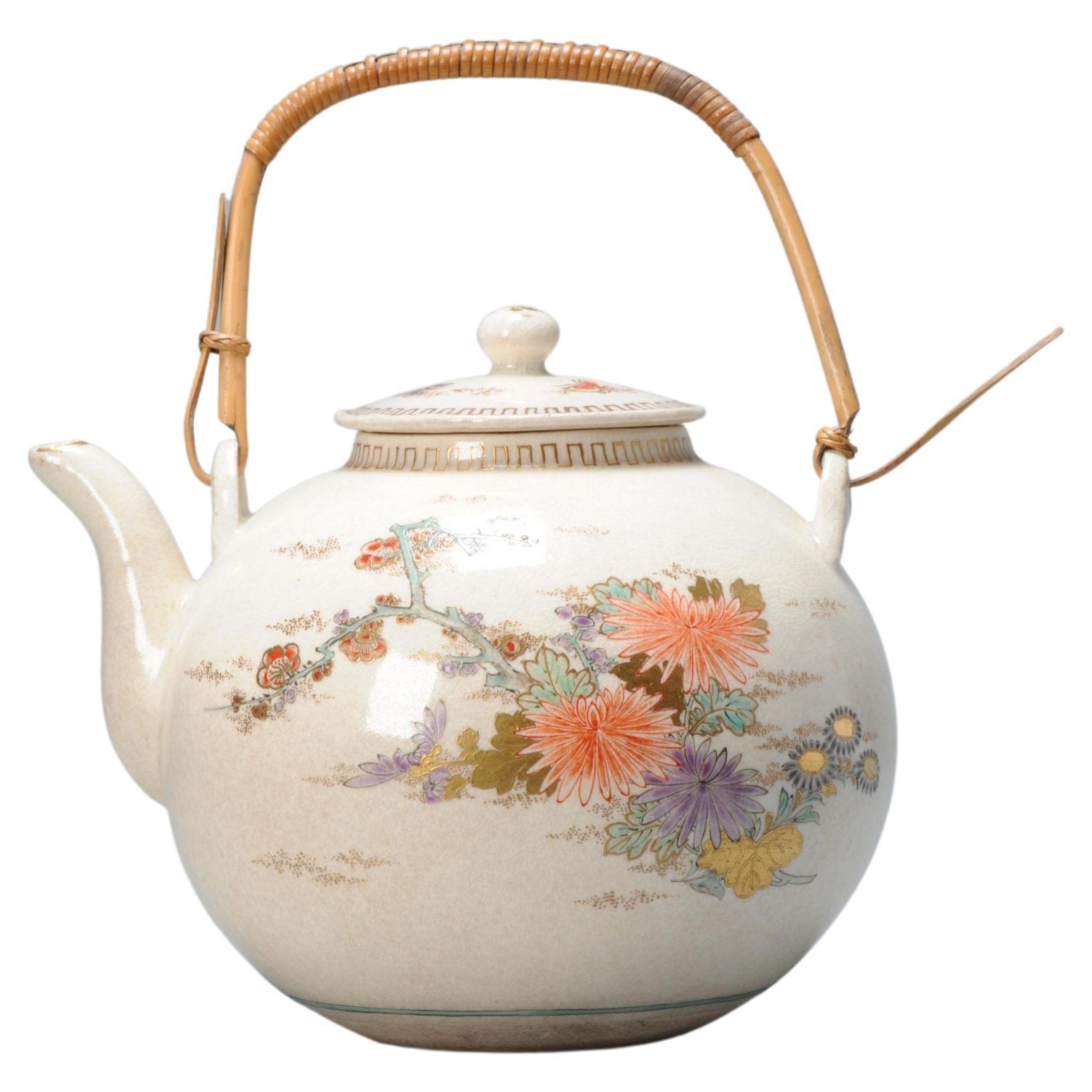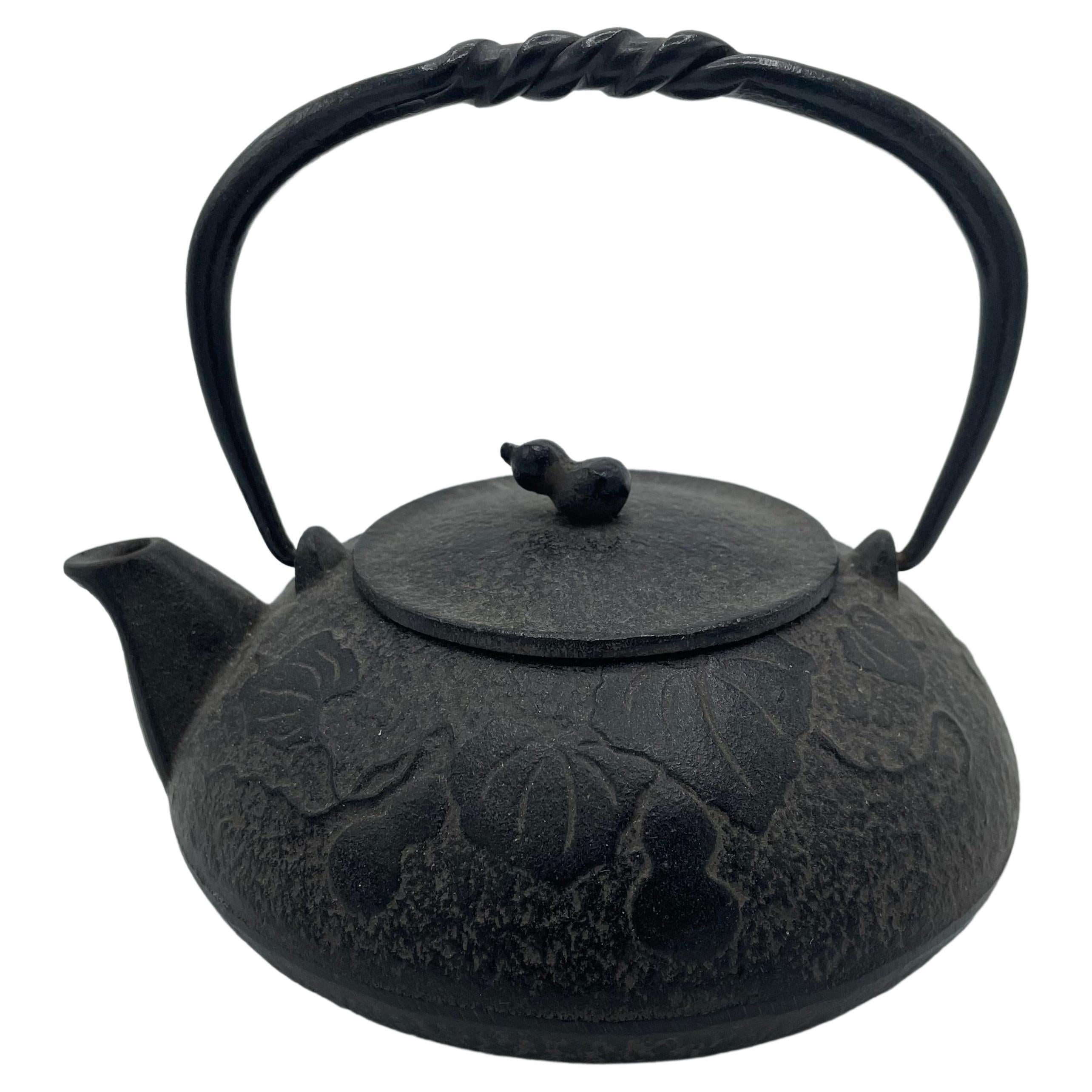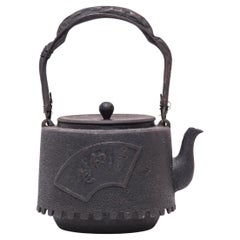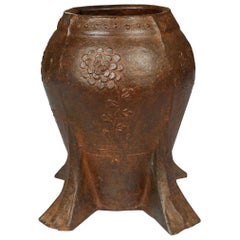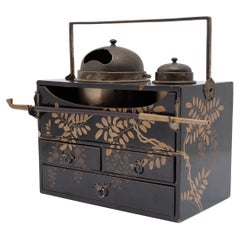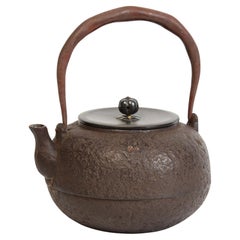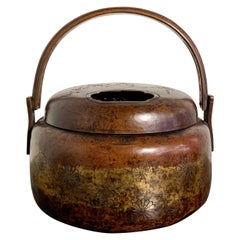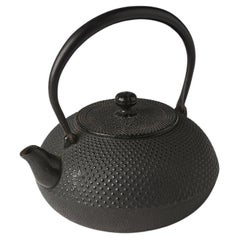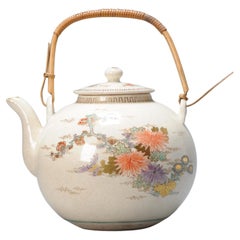Items Similar to Japanese Iron Tetsubin with Chrysanthemum Blossoms, c. 1900
Want more images or videos?
Request additional images or videos from the seller
1 of 13
Japanese Iron Tetsubin with Chrysanthemum Blossoms, c. 1900
$980
£744.14
€850.98
CA$1,369.20
A$1,522.85
CHF 795.19
MX$18,531.48
NOK 10,155.74
SEK 9,524.29
DKK 6,351.16
Shipping
Retrieving quote...The 1stDibs Promise:
Authenticity Guarantee,
Money-Back Guarantee,
24-Hour Cancellation
About the Item
Decorated with stylized chrysanthemum blossoms, symbols of longevity and rejuvenation, this Japanese teapot was used to boil water for traditional tea ceremonies. Known as tetsubin, the kettle’s cast-iron construction is said to change the quality of the water, making tea taste mellow and sweet. Made by pouring iron into clay or sand molds, the kettle has a rustic texture in pleasing contrast to its elegant, arched handle and intricately incised lid. The lid is signed by the artisan who crafted the kettle during Japan's Meiji period, an era when artisans began introducing elements of modern Western design into traditional forms.
- Dimensions:Height: 8.75 in (22.23 cm)Width: 7.25 in (18.42 cm)Depth: 6.5 in (16.51 cm)
- Style:Meiji (Of the Period)
- Materials and Techniques:
- Place of Origin:
- Period:
- Date of Manufacture:1900
- Condition:Wear consistent with age and use.
- Seller Location:Chicago, IL
- Reference Number:Seller: CCB0071stDibs: LU820011238413
About the Seller
5.0
Platinum Seller
Premium sellers with a 4.7+ rating and 24-hour response times
Established in 1997
1stDibs seller since 2006
1,695 sales on 1stDibs
Typical response time: 1 hour
- ShippingRetrieving quote...Shipping from: Chicago, IL
- Return Policy
Authenticity Guarantee
In the unlikely event there’s an issue with an item’s authenticity, contact us within 1 year for a full refund. DetailsMoney-Back Guarantee
If your item is not as described, is damaged in transit, or does not arrive, contact us within 7 days for a full refund. Details24-Hour Cancellation
You have a 24-hour grace period in which to reconsider your purchase, with no questions asked.Vetted Professional Sellers
Our world-class sellers must adhere to strict standards for service and quality, maintaining the integrity of our listings.Price-Match Guarantee
If you find that a seller listed the same item for a lower price elsewhere, we’ll match it.Trusted Global Delivery
Our best-in-class carrier network provides specialized shipping options worldwide, including custom delivery.More From This Seller
View All“Fanning the Fire” Japanese Tetsubin Kettle, c. 1924
Located in Chicago, IL
Decorated with a raised fan motif, this aptly named teapot was used to boil water for traditional tea ceremonies. Known as tetsubin, the kettle’s cast-iron construction is said to ch...
Category
Early 20th Century Japanese Taisho Metalwork
Materials
Iron
Vintage Chinese Cast Iron Chrysanthemum Mortar
Located in Chicago, IL
This vintage iron mortar from China's Shanxi province was cast in low relief with a delicate chrysanthemum in bloom. Originally used in a traditional apothecary to create herbal medi...
Category
Mid-20th Century Chinese Rustic Metalwork
Materials
Iron
Japanese Gilt Takamaki-E Tabako-Bon, C. 1850
Located in Chicago, IL
This box with many drawers is a Japanese tabako-bon, or 'tobacco tray,' used to store tobacco and smoking accessories. Believed to have evolved from the t...
Category
Antique Mid-19th Century Japanese Meiji Lacquer
Materials
Brass
Vintage Chinese Floral Cast Iron Mortar
Located in Chicago, IL
This vintage cast iron mortar from China's Shanxi province is patterned in low relief with a simple floral design. Originally used in a traditional ap...
Category
Mid-20th Century Chinese Rustic Metalwork
Materials
Iron
Vintage Chinese Floral Cast Iron Mortar
Located in Chicago, IL
This vintage cast iron mortar from China's Shanxi province is patterned in low relief with a simple floral design. Originally used in a traditional ap...
Category
Mid-20th Century Chinese Rustic Metalwork
Materials
Iron
Chinese Floral Apothecary Mortar, circa 1900
Located in Chicago, IL
This vintage mortar and pestle from Shanxi, China was cast in iron with a floral relief. It was originally used in a traditional apothecary t...
Category
Early 20th Century Chinese Qing Metalwork
Materials
Iron
You May Also Like
19th Century, Meiji, Antique Japanese Iron Teapot with Bronze Lid
Located in Sampantawong, TH
Antique Japanese iron teapot with bronze lid.
Age: Japan, Meiji Period, 19th Century
Size: Height 19.8 C.M. / Width 17.3 C.M. / Diameter 15.5
Co...
Category
Antique 19th Century Japanese Antiquities
Materials
Bronze, Iron
$1,000 Sale Price
20% Off
Japanese Parcel Gilt Copper Hibachi, Edo Period, 18th Century, Japan
Located in Austin, TX
A sublime Japanese parcel gilt copper hand warmer, hibachi, with chrysanthemum design, Edo Period, 18th century, Japan.
The hand warmer, called a...
Category
Antique 18th Century Japanese Edo Metalwork
Materials
Copper
Mid-20th Century, Showa, Japanese Steel Teapot
Located in Sampantawong, TH
Japanese steel teapot with nice design.
Age: Japan, Showa Period, Mid-20th Century
Size: Height 20.8 C.M. / Width 21 C.M.
Condition: Nice condition...
Category
Mid-20th Century Japanese Metalwork
Materials
Metal
$1,504 Sale Price
20% Off
Antique Meiji Period Satsuma Teapot Flowers Butterflies, Late 19th/Early 20th
Located in Amsterdam, Noord Holland
A lovely Satsuma Teapot.
Additional information:
Material: Porcelain & Pottery
Japanese Style: Satsuma
Region of Origin: Japan
Period: 19th century, 20...
Category
Antique Late 19th Century Japanese Meiji Tea Sets
Materials
Porcelain
$862 Sale Price
20% Off
Antique Japanese Kettle with Iron Tetsubin : Calabash Design 1930s
Located in Paris, FR
This kettle was made in 1930s, Showa era. And the design is with Calabashes.
The iron kettles like this item are called 'Tetsubin' in Japan.
It can be pu...
Category
Vintage 1930s Japanese Tea Sets
Materials
Iron
19th Century, Meiji, Antique Japanese Iron Teapot with Artist Sign
Located in Sampantawong, TH
Japanese iron teapot with artist sign.
Age: Japan, Meiji Period, 19th Century
Size: height 24.3 cm / width 16 cm
Condition: Nice condition ov...
Category
Antique 19th Century Japanese Antiquities
Materials
Iron
$2,560 Sale Price
20% Off
More Ways To Browse
Japan 1900
Japanese Iron
Antique Chrysanthemum
Japanese Rustic
Antique Cast Iron Signs
Japanese Iron Meiji
Cast Iron Mold
Teapot Japan
Cast Iron Arch
Cast Iron Japanese
Japanes Cast Iron
Antique Cast Iron Mold
Antique Gold Teapot
Antique Japanese Teapots
Clay Teapot
Antique Water Kettle
Antique Japanese Cast Iron
Iron Kettle
